At the SFG I, where many of us learned to use kettlebells as strength tools, we are first taught the swing. As we’ve heard StrongFirst Certified Master Instructor Emeritus, Rif say, “the swing is the center of the kettlebell universe.” The instruction of the swing is then followed by the get-up, the squat, the press, the snatch, and, of course, the clean. For many of us, the clean becomes a necessary movement to safely get kettlebells from the floor to the rack position to press, squat, or carry (double kettlebell front rack carries will give your frame something to think about).
When first learning how to clean kettlebells, one of the best drills is the cheat clean. In my 20+ years of personal training, and over half of that using kettlebells as my primary strength tool, I have found that sometimes the drill is just as beneficial as the skill when properly loaded and programmed correctly. Deadlifts, low swings, half-kneeling bent presses, and windmills are all examples of drills that improve a larger skill while also having a huge impact on strength training. Cheat cleans fall within this category. They can teach you how to pick up very heavy kettlebells and instruct your body how to get tight.
How to Perform a Cheat Clean
When performing a cheat clean, the student aligns the kettlebell vertically between the feet (perpendicular to the frontal plane). Then the student grabs the kettlebell with the intended rack position hand, while the other hand is used as the helper hand directly over the main working side. From that position, using good hinge mechanics, the student stands up and places the kettlebell appropriately, not slamming the shoulder or forearm, into the intended rack position. The body ends in a vertical hardstyle plank position—glutes, lats, trunk, and grip engaged. From this position, the student removes the helper hand and enjoys the presence of a loaded rack hold. It is necessary first for students to practice a hardstyle plank to understand lat, abs, and glute engagement in a good stacking position.
Once the kettlebell is heavy enough, students may add a low swing to get their hips more involved in the lift. If the kettlebell changes your clean and rack position, it is too heavy. Some changes, indicating that the weight is too heavy, might include lifting the heels to get the kettlebell up, leaning way back, or even adding a second dip to try and lower the height of the shoulders to get the kettlebell in rack position. If the student is leaning too far to the side, having to kip the hip out in the rack hold, or just not able to maintain tension—the student should grab a lighter kettlebell by about 4kg (which isn’t light in a cheat clean).
The Benefit of Cheat Cleans
Once learned, cheat cleans can be a valuable addition to your training program.
1. Picking up a heavy load teaches tension. I’ve found that students have a harder time learning how to create tension when they are not given feedback. When students feel a heavy weight in their hands, their brains “figure out” how to send those tension messages to the muscles. Hardstyle planks, hip bridges, and even pushup variations in some cases don’t provide as much feedback as holding something heavy.
2. Similar to deadlifts, carries, and heavy swings—heavy cheat cleans load the frame and build total squeeze strength. Why is this important? Powerlifters, who are among the strongest athletes, are masters of creating tension. They engage their lats in a back squat and know to squeeze their triceps in a deadlift. Strength athletes should know how to create total body tension. Heavy cheat cleans teach students to apply tension against load and not allow leakage.
3. The cheat clean requires low skill but yields high rewards. Essentially, the cheat clean is a drill that’s easy to learn but leads to a regular clean. This allows a student to benefit from loading the rack position before they are completely proficient in cleans. For students that already have mastered the clean, using the cheat clean allows strength training with heavy kettlebells.
4. Heavy cheat cleans will teach clean technique by reinforcing a strong rack position, and setting up for a press or front squat. Because the cheat clean is a drill, it gives the student the necessary practice to improve the clean. And because it’s a bit heavier, it helps super load the prep systems and trains the skill of tension that translates into stronger presses and front squats.
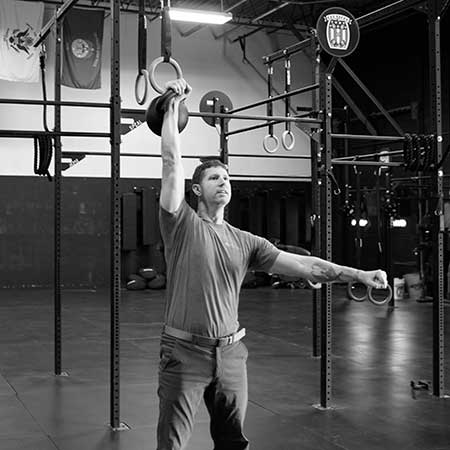
Adding Cheat Cleans to Your Training
I program heavy cheat cleans in a variety of ways. Most often I use them in a section called “loaded prep” right after a dynamic warm-up. They are great to use in group classes because of how low risk/high reward they are. I like to do 2 sets of 3 on each side, alternating arms every rep and holding the kettlebell in the rack position for two seconds. I tell students to think of their 5-rep max (RM) press kettlebell and then go up at least one, maybe two kettlebells—if they feel especially froggy.
Heavy cheat cleans also work well at the end of a training session as a variant to carries. I often program locomotion at the end of sessions such as carries, sleds, pulls/drags, and get-ups, depending on the skill and strength of a student. Cheat cleans and rack carries are an effective addition. For example, you can perform three cheat cleans then a rack carry for 20ft, rest, then repeat on the other side. I often program this for 2-4 rounds.
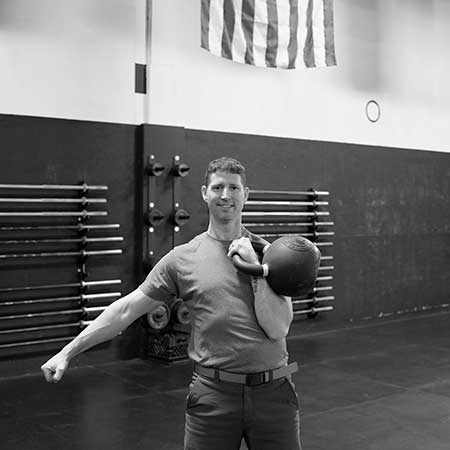
However, my favorite way to program heavy cheat cleans is on a heavy kettlebell variation day. I choose a very heavy kettlebell for me or my student (usually of more advanced skill) and we run through 4-6 exercises just using that kettlebell for 3-4 rounds. When choosing a kettlebell, I usually take my 1RM press kettlebell and go up one to two kettlebell sizes. That’s heavy for me (and should be for anyone).
Here is a sample of that training day with a 48kg kettlebell:
- Cheat clean—4/4 (fast and loose)
- Goblet squat slow w pauses—6 (fast and loose)
- Dead stop swings—6
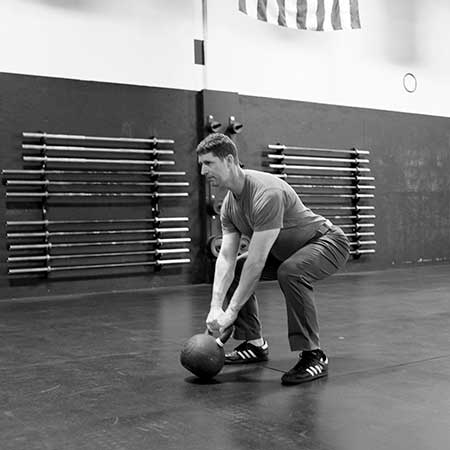
Legs feel a bit worked now, so we add:
- One-arm pushup variation—4/4
- Loaded pullup—2
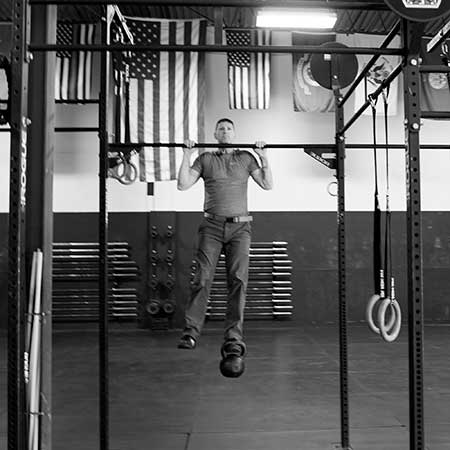
Conclusion
Heavy cheat cleans are an excuse to pick up very heavy weights. Big deadlifts and big squats are awesome, but they are high-skill and sometimes are not the best choices for certain students. We all can benefit from picking up heavy weight and squeezing against it. That’s where the cheat clean (with a rack hold) comes in. I’ve found that in minimalist programming for my students and myself, the opportunity to pick up a kettlebell 2-4x larger than you can press is a worthwhile pursuit. There’s a saying that goes something like, “the body only knows what it knows.” I’m probably misquoting that; however, the take-away is that our central nervous system is an experiential learner. There is a huge gain from forcing the body to get tight. In this case not with the skill of irradiation and non-loaded isometrics, but with actual wrestling against an external load. And now the softer science-psychology (that’s actually real science) of heavy practice: When you witness a student pick up a kettlebell heavier than they ever have and not just deadlift it, but put it on their shoulder, you will see a confidence and feeling of power that few exercises can bring.
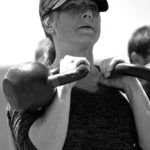
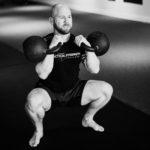
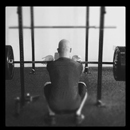
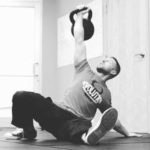
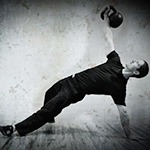

This Is great, i have a question, i have a 16 Kg , two 20 Kg , a 24 and a 32 Kg bells, i can do a cheat stacked clean with the 24 and the 20 in the same hand (44 Kgs in total) how should i progress to using the 24 and 32 stacked in a cheat clean? , Would It be a good idea to train the Rack position with a heavy Weight isometrically?
Awesome article!
How many of those heavy variety days would you recommend per week?
Is once a week enough?
I typically like to do just one variation day a week. That puts a total of just 3 days a week strength training. (2 on my workhorse grind program and 1 variation day)
Then outside is that could be a ballistic program for 2 days a week depending on goals and recoverability.
Good point.
Thanks for sharing!
This is an excellent article. I’ve used KBs for 20 years, but being in my 70s now I can’t lift what I used to. Still, I’ve always enjoyed lifting heavy and this provides a way for me to continue to include heavy KBs in my sessions. SAFELY. Thanks much!
Great article, Brian!
I agree, the cheat clean is a great thing to teach very early in handling the kettlebell, to enable access presses, squats, and carries before getting into ballistic movements.